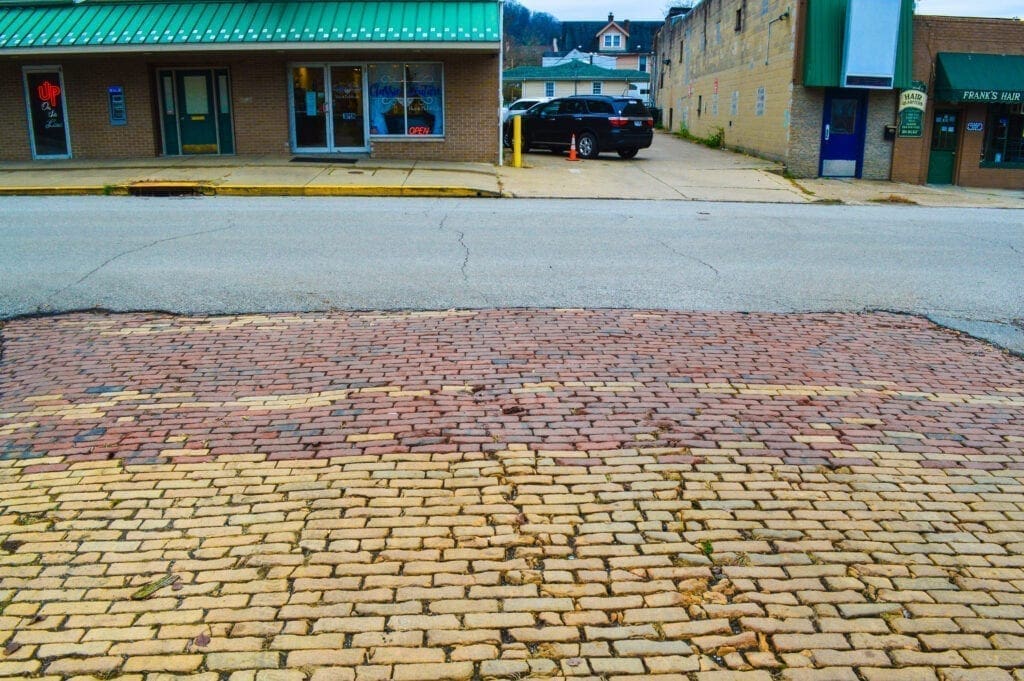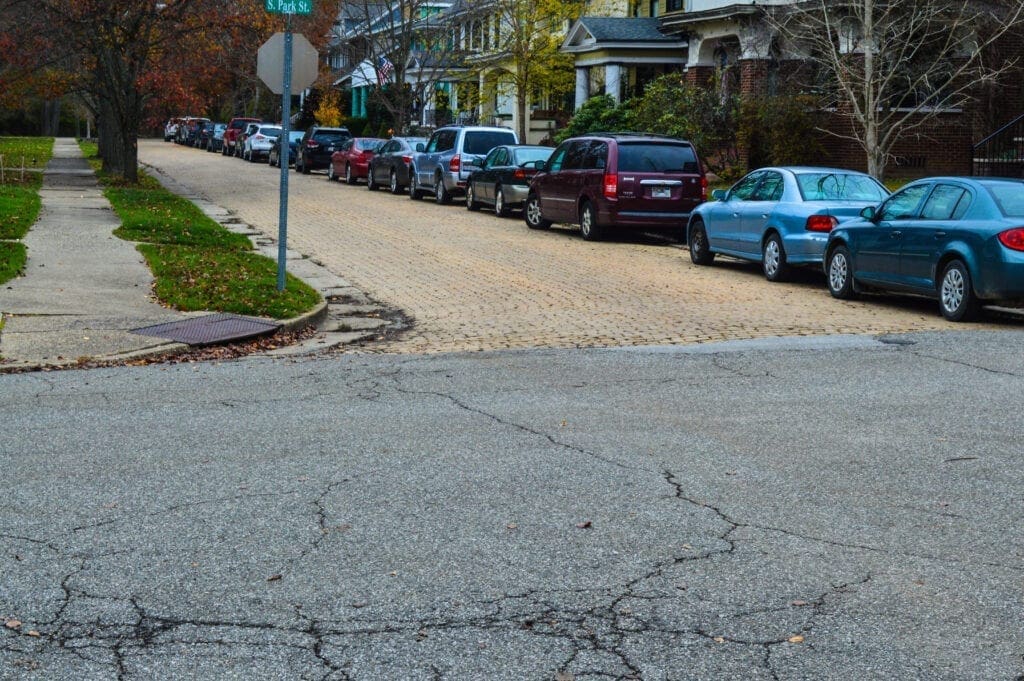There are sewer pipes, water mains, gas lines, even trolley tracks under most streets in the Upper Ohio Valley, but on the way down to whatever underground infrastructure issue the workers most often encounter a layer of thick bricks.
Most often, yes, yellow bricks, but Rusty Jebbia, the director of Public Works for the city of Wheeling, and his operations staff also have discovered deep red and maroon blocks, too.
“The brick roads went away from the city of Wheeling because of the cost to replace them,” he explained. “Once the bricks start to cup and the edges of the bricks started getting edges on them, it made driving over those roads really difficult. They would have to replace them to make the road flat again, so back in those days the simplest thing to do was to overlay it with asphalt.
“They used fire bricks when they made the roads, and they are usually pretty hard when we’re digging them up to fix something, and we have found that there are bricks under our streets that are different colors,” he explained. “My guess is that it depended on who was doing the work and how they brought in the bricks for the roads.”

A Product of the Depression
The very first brick road in the United States is believed to have been constructed in 1870 on Summers Street in Charleston, W.Va., according the state Division of Culture and History. As far as when the innovation finally arrived in Wheeling, Jebbia revealed it was part of the public works program under President Franklin D. Roosevelt’s New Deal.
Roosevelt, the nation’s 32nd president, was elected four years after the beginning of The Great Depression, and the New Deal was a federal initiative to rebuild a destroyed American economy.
“That’s when they had the labor and had to put people to work, and that is how they made all of the brick streets. It took thousands and thousands of bricks to make the streets that this area used to have,” said Jebbia, a 43-year employee with the city of Wheeling. “There was a time when there were streets in Wheeling that were covered with the crushed rock, but the majority were made of brick.
“Right now, though, we are pretty limited as far as how many brick streets we have,” he said. “There are a few alleys, too, and there are streets in some neighborhoods that are still brick, but there are still a lot of bricks below the surfaces of the roads, and that includes downtown Wheeling. Every time we have a water line blow, there’s usually that brick seam that the guys have to go through to get to the pipe.”

Suddenly Sinking Streets
There exist areas in downtown Wheeling right now where underground construction is taking place in preparation for the streetscape project scheduled for next year along Main and Market streets as well as parts of Eoff and Chapline streets, but Jebbia has handled sink holes on several occasions during his career.
Most of those repairs have involved brick streets and alleys because the worn surfaces allowed rain and melted snow to flow beneath to erode the ground below.
“We have seen some pretty large caverns develop under some roads, and other times it’s been a small area that didn’t require a ton of work,” Jebbia said. “It all depends on how the brick road was installed, what’s under that road as the base, how thick the bricks are, and the materials used to seal up the bricks.
“Another reason why most of the brick roads are gone now is because of the quality of asphalt that started to get produced and the cost comparisons between the two options,” he explained. “It was more practical because they could pave more streets for the same amount of money. Now, brick roads last a very long time, but it comes down to what is more economical.”




